Transcription of Learning Deep Features for Discriminative Localization
1 Learning Deep Features for Discriminative LocalizationBolei Zhou, Aditya Khosla, Agata Lapedriza, Aude Oliva, Antonio TorralbaComputer Science and Artificial Intelligence Laboratory, this work, we revisit the global average pooling layerproposed in [13], and shed light on how it explicitly enablesthe convolutional neural network (CNN) to have remark-able Localization ability despite being trained on image-level labels. While this technique was previously proposedas a means for regularizing training, we find that it actu-ally builds a generic localizable deep representation thatexposes the implicit attention of CNNs on an image. Despitethe apparent simplicity of global average pooling, we areable to achieve top-5 error for object Localization onILSVRC 2014 without training on any bounding box demonstrate in a variety of experiments that ournetwork is able to localize the Discriminative image regionsdespite just being trained for solving classification IntroductionRecent work by Zhouet al[34] has shown that the con-volutional units of various layers of convolutional neuralnetworks (CNNs) actually behave as object detectors de-spite no supervision on the location of the object was pro-vided.
2 Despite having this remarkable ability to localizeobjects in the convolutional layers, this ability is lost whenfully-connected layers are used for classification. Recentlysome popular fully-convolutional neural networks such asthe Network in Network (NIN) [13] and GoogLeNet [25]have been proposed to avoid the use of fully-connected lay-ers to minimize the number of parameters while maintain-ing high order to achieve this, [13] usesglobal average pool-ingwhich acts as a structural regularizer, preventing over-fitting during training. In our experiments, we found thatthe advantages of this global average pooling layer extendbeyond simply acting as a regularizer - In fact, with a littletweaking, the network can retain its remarkable localizationability until the final layer. This tweaking allows identifyingeasily the Discriminative image regions in a single forward-1 Code and models are available at teethCutting treesFigure 1. A simple modification of the global average pool-ing layer combined with our class activation mapping (CAM)technique allows the classification-trained CNN to both classifythe image and localize class-specific image regions in a singleforward-pass , the toothbrush forbrushing teethand the chain-saw forcutting for a wide variety of tasks, even those that the networkwas not originally trained for.
3 As shown in Figure1(a), aCNN trained on object categorization is successfully able tolocalize the Discriminative regions for action classificationas the objects that the humans are interacting with ratherthan the humans the apparent simplicity of our approach, for theweakly supervised object Localization on ILSVRC bench-mark [21], our best network achieves top-5 test er-ror, which is rather close to the top-5 test errorachieved by fully supervised AlexNet [10]. Furthermore,we demonstrate that the localizability of the deep Features inour approach can be easily transferred to other recognitiondatasets for generic classification, Localization , and Related WorkConvolutional Neural Networks (CNNs) have led to im-pressive performance on a variety of visual recognitiontasks [10,35,8]. Recent work has shown that despite beingtrained on image-level labels, CNNs have the remarkableability to localize objects [1,16,2,15,18]. In this work, weshow that, using an appropriate architecture, we can gener-alize this ability beyond just localizing objects, to start iden-tifying exactly which regions of an image are being used for12921discrimination.
4 Here, we discuss the two lines of work mostrelated to this paper: weakly-supervised object localizationand visualizing the internal representation of object Localization :There havebeen a number of recent works exploring weakly-supervised object Localization using CNNs [1,16,2,15].Bergamoet al[1] propose a technique for self-taught objectlocalization involving masking out image regions to iden-tify the regions causing the maximal activations in order tolocalize objects. Cinbiset al[2] and Pinheiroet al[18]combine multiple-instance Learning with CNN Features tolocalize objects. Oquabet al[15] propose a method fortransferring mid-level image representations and show thatsome object Localization can be achieved by evaluating theoutput of CNNs on multiple overlapping patches. However,the authors do not actually evaluate the Localization the other hand, while these approaches yield promisingresults, they are not trained end-to-end and require multi-ple forward passes of a network to localize objects, makingthem difficult to scale to real-world datasets.
5 Our approachis trained end-to-end and can localize objects in a single for-ward most similar approach to ours is the work based onglobal max pooling by Oquabet al[16]. Instead of globalaveragepooling, they apply globalmaxpooling to localizea point on objects. However, their Localization is limited toa point lying in the boundary of the object rather than deter-mining the full extent of the object. We believe that whilethemaxandaveragefunctions are rather similar, the useof average pooling encourages the network to identify thecomplete extent of the object. The basic intuition behindthis is that the loss for average pooling benefits when thenetwork identifiesalldiscriminative regions of an object ascompared to max pooling. This is explained in greater de-tail and verified experimentally in Furthermore,unlike [16], we demonstrate that this Localization ability isgeneric and can be observed even for problems that the net-work was not trained useclass activation mapto refer to the weighted acti-vation maps generated for each image, as described in Sec-tion2.
6 We would like to emphasize that while global aver-age pooling is not a novel technique that we propose here,the observation that it can be applied for accurate discrimi-native Localization is, to the best of our knowledge, uniqueto our work. We believe that the simplicity of this tech-nique makes it portable and can be applied to a variety ofcomputer vision tasks for fast and accurate CNNs:There has been a number of recentworks [30,14,4,34] that visualize the internal represen-tation learned by CNNs in an attempt to better understandtheir properties. Zeileret al[30] use deconvolutional net-works to visualize what patterns activate each unit. Zhouetal.[34] show that CNNs learn object detectors while beingtrained to recognize scenes, and demonstrate that the samenetwork can perform both scene recognition and object lo-calization in a single forward-pass. Both of these worksonly analyze the convolutional layers, ignoring the fully-connected thereby painting an incomplete picture of the fullstory.
7 By removing the fully-connected layers and retain-ing most of the performance, we are able to understand ournetwork from the beginning to the al[14] and Dosovitskiyet al[4] analyzethe visual encoding of CNNs by inverting deep featuresat different layers. While these approaches can invert thefully-connected layers, they only show what informationis being preserved in the deep Features without highlight-ing the relative importance of this information. Unlike [14]and [4], our approach can highlight exactly which regionsof an image are important for discrimination. Overall, ourapproach provides another glimpse into the soul of Class Activation MappingIn this section, we describe the procedure for generatingclass activation maps(CAM) using global average pooling(GAP) in CNNs. A class activation map for a particular cat-egory indicates the Discriminative image regions used by theCNN to identify that category ( , ). The procedurefor generating these maps is illustrated in use a network architecture similar to Network in Net-work [13] and GoogLeNet [25] - the network largely con-sists of convolutional layers, and just before the final out-put layer (softmax in the case of categorization), we per-form global average pooling on the convolutional featuremaps and use those as Features for a fully-connected layerthat produces the desired output (categorical or otherwise).
8 Given this simple connectivity structure, we can identifythe importance of the image regions by projecting back theweights of the output layer on to the convolutional featuremaps, a technique we call class activation illustrated in , global average pooling outputsthe spatial average of the feature map of each unit at thelast convolutional layer. A weighted sum of these values isused to generate the final output. Similarly, we compute aweighted sum of the feature maps of the last convolutionallayer to obtain our class activation maps. We describe thismore formally below for the case of softmax. The sametechnique can be applied to regression and other a given image, letfk(x, y)represent the activationof unitkin the last convolutional layer at spatial location(x, y). Then, for unitk, the result of performing globalaverage pooling,Fkis x,yfk(x, y). Thus, for a givenclassc, the input to the softmax,Sc, is kwckFkwherewckis the weight corresponding to classcfor unitk.
9 Essentially,wckindicates theimportanceofFkfor classc. Finally theoutput of the softmax for classc,Pcis given byexp(Sc) cexp(Sc).2922 Australian terrier .. CONV CONV CONV CONV CONVGAP .. w1 w2 wn w1 * + w2 * + .. + wn * Class Activation Map (Australian terrier) = CONV Class Activation Mapping Figure 2. Class Activation Mapping: the predicted class score is mapped back to the previous convolutional layer to generate the classactivation maps (CAMs). The CAM highlights the class-specific Discriminative we ignore the bias term: we explicitly set the inputbias of the softmax to0as it has little to no impact on theclassification pluggingFk= x,yfk(x, y)into the class score,Sc, we obtainSc= kwck x,yfk(x, y) = x,y kwckfk(x, y).(1)We defineMcas the class activation map for classc, whereeach spatial element is given byMc(x, y) = kwckfk(x, y).(2)Thus,Sc= x,yMc(x, y), and henceMc(x, y)directlyindicates the importance of the activation at spatial grid(x, y)leading to the classification of an image to , based on prior works [34,30], we expect eachunit to be activated by some visual pattern within its recep-tive field.
10 Thusfkis the map of the presence of this visualpattern. The class activation map is simply a weighted lin-ear sum of the presence of these visual patterns at differentspatial locations. By simply upsampling the class activa-tion map to the size of the input image, we can identify theimage regions most relevant to the particular , we show some examples of the CAMs outputusing the above approach. We can see that the discrimi-native regions of the images for various classes are high-lighted. In highlight the differences in the CAMsfor a single image when using different classescto gener-ate the maps. We observe that the Discriminative regionsfor different categories are different even for a given im-age. This suggests that our approach works as demonstrate this quantitatively in the sections 3. The CAMs of two classes from ILSVRC [21]. The mapshighlight the Discriminative image regions used for image classifi-cation, the head of the animal forbriardand the plates sawFigure 4.


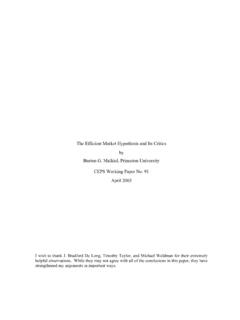

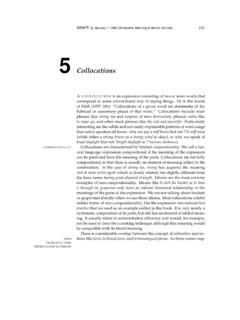
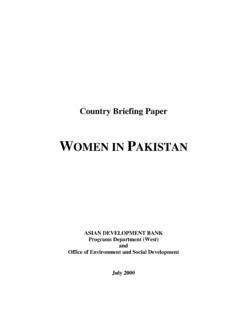
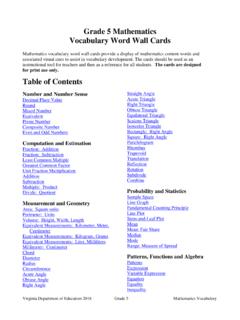
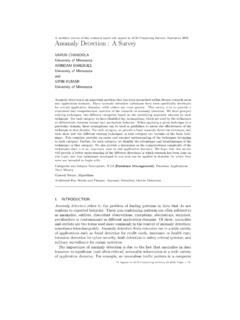
![AI Full.pptx [Read-Only] - DARPA](/cache/preview/f/c/f/9/d/a/0/2/thumb-fcf9da0264f0d9a2e3692f54d520084c.jpg)